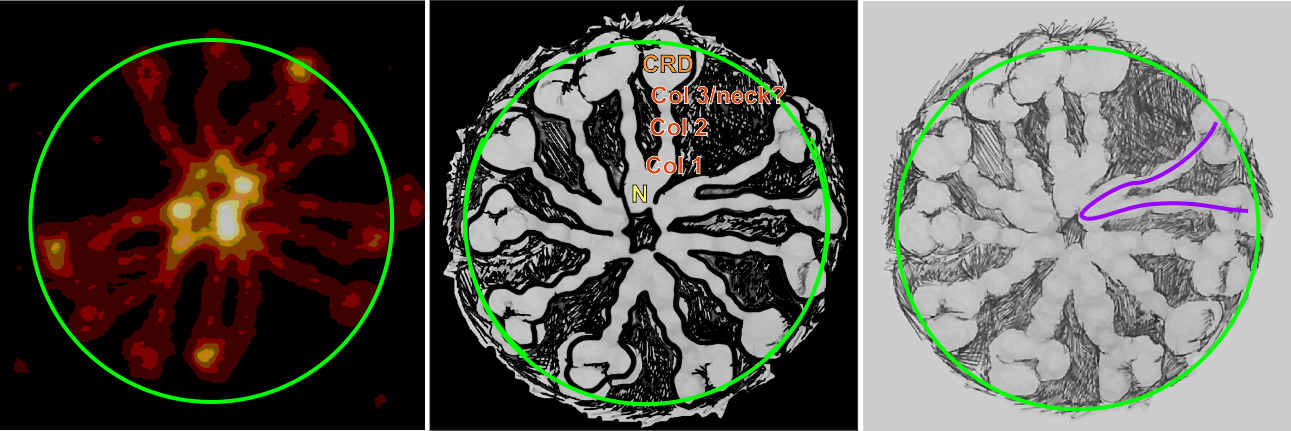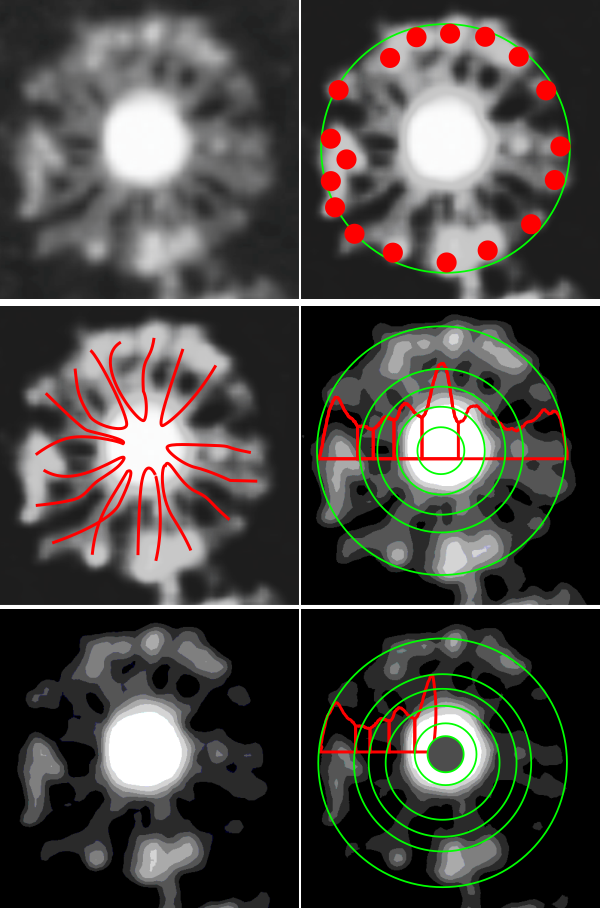SP-D multimer (18 arms 9 N termini junctions) – how are they arranged? This particular AFM image is not in good focus and the center (which may be influenced by the number of N termini involved) does not show any dark (low elevation, or low grayscale values) like some of the multimers with fewer arms. I have mapped this out in several ways and applied various grayscale processes to see whether something of the “expected” three rings (signifying the three peaks between the CRD and the N termini can be found. Neither really fits…. but the straight across dodecamer with all N termini in a central glump does not work well at all. Similarly to a previous image (this image is SP-D-multimer 4 in a series collected from various publications that are not mine), it is likely that the number of arms does not fit the plan of always adding a dodecamer group to a fuzzyball, at least this seems to have 18 CRD not 16 or 20. Top left is slightly contrast enhanced, others are processed more though non has been “photoshopped” to change the data. LUT curves obtained from dodecamers are superimposed on two lower right images, and hand drawn overlay shows where a hairpin bend in a hexamer might occur while forming a SP-D fuzzyball.
Monthly Archives: July 2019
A quick SP-D multimer sketch to explain the dark “hole” in the center
For about two years I have pondered over why in some of the SP-D multimers there is a low grayscale area in the center, in some cases looking almost like a star shape, and certainly related to how many arms are in the multimer. Below is visual trip through image processing a single multimer with 14 individual arms.
Three images also image processed but two diagrams hand drawn of a 12-armed multimer. I will try to figure out a way to verify what I have thought about for all this time…that is, a hollow core SP-D fuzzyball. I don’t see any other way….but the catch 22 is that the shadowed images dont really fit this idea.
